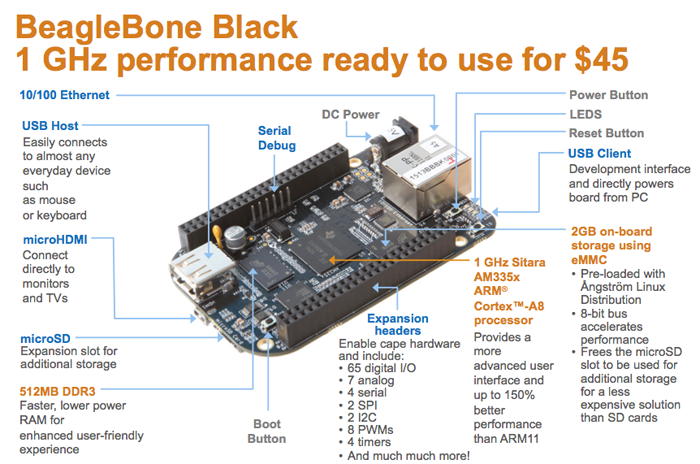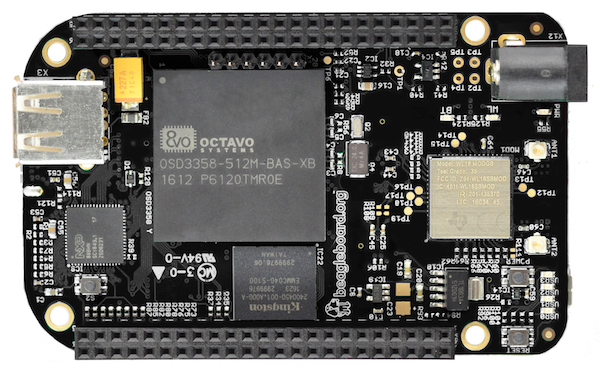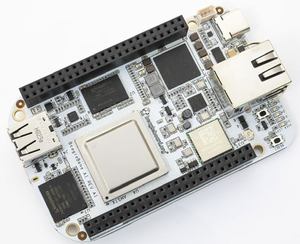It looks like the BeagleBone AI gets its AI from the two Dual-core ARM Cortex-M4's plus the two dual-core C66x DSPs.
Problem is getting those extra CPUs getting recognised and to work. CPU info for the BeagleBone AI only shows the dual-core Cortex-A15:
Code:
$ lscpu
Architecture: armv7l
Byte Order: Little Endian
CPU(s): 2
On-line CPU(s) list: 0,1
Thread(s) per core: 1
Core(s) per socket: 2
Socket(s): 1
Model: 2
Model name: ARMv7 Processor rev 2 (v7l)
CPU max MHz: 1500.0000
CPU min MHz: 1000.0000
BogoMIPS: 12.29
Flags: half thumb fastmult vfp edsp thumbee neon vfpv3 tls vfpv4 idiva idivt vfpd32 lpae evtstrm
$ cat /proc/cpuinfo
processor : 0
model name : ARMv7 Processor rev 2 (v7l)
BogoMIPS : 12.29
Features : half thumb fastmult vfp edsp thumbee neon vfpv3 tls vfpv4 idiva idivt vfpd32 lpae evtstrm
CPU implementer : 0x41
CPU architecture : 7
CPU variant : 0x2
CPU part : 0xc0f
CPU revision : 2
processor : 1
model name : ARMv7 Processor rev 2 (v7l)
BogoMIPS : 12.29
Features : half thumb fastmult vfp edsp thumbee neon vfpv3 tls vfpv4 idiva idivt vfpd32 lpae evtstrm
CPU implementer : 0x41
CPU architecture : 7
CPU variant : 0x2
CPU part : 0xc0f
CPU revision : 2
Hardware : Generic DRA74X (Flattened Device Tree)
Revision : 0000
Serial : 0901700a7b180b22
ARM itself just released a new Cortex-M, the Cortex-M55, which they claim to be the most AI-capable Cortex-M processor and that delivers up to 5x DSP performance. 
Its capabilities can be enhanced by coupling it to their Ethos-U55 NPU
-which can also be coupled to the Cortex-M33, M4 -like in the BeagleBone AI- and M7.


This might be useful for e.g. the Wildlife@Home sub-poject of Citizen Science Grid
-provided they have the energy to wake themselves up and write a new application.







 Reply With Quote
Reply With Quote











